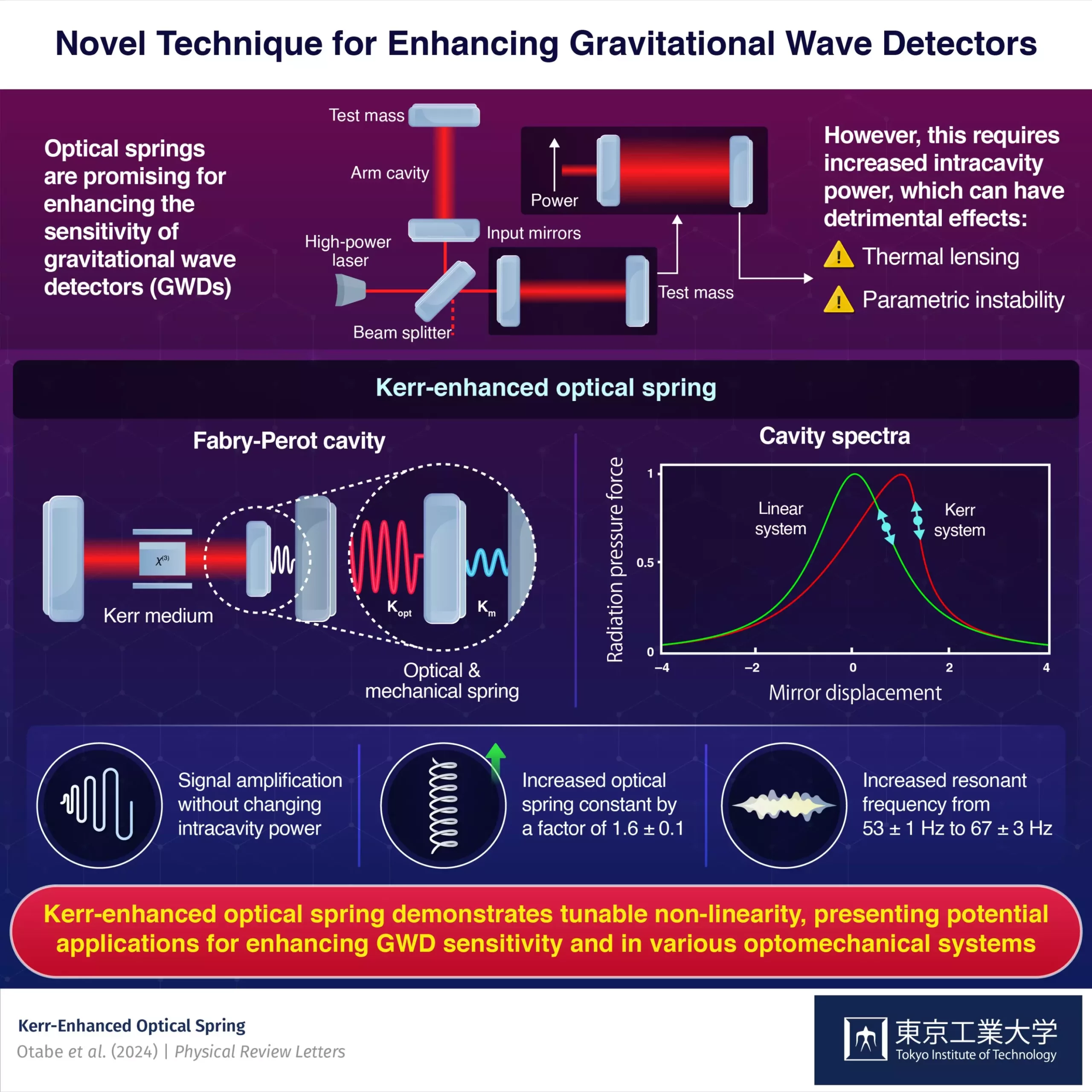Gravitational waves have revolutionized modern physics since their detection in 2017. While the detection of these waves from the merger of a binary neutron star provided crucial insights into our universe, the search for post-merger remnants has remained challenging due to the limitations of current gravitational wave detectors (GWDs).
The frequency range of elusive gravitational waves lies beyond the capabilities of existing GWDs, highlighting the urgent need for next-generation detectors. To enhance the sensitivity of GWDs and enable the detection of post-merger remnants, researchers have explored innovative solutions such as optical springs.
Optical springs, powered by radiation pressure force from light, offer a unique way to amplify signals in GWDs. The stiffness of optical springs is influenced by the light power within the optical cavity, with the resonant frequency depending on this power. However, increasing intracavity power can lead to thermal issues that hinder detector performance.
A team of researchers from Japan, led by Associate Professor Kentaro Somiya and Dr. Sotatsu Otabe, introduced a groundbreaking solution: the Kerr-enhanced optical spring. By leveraging the optical Kerr effect in a Fabry-Perot type optomechanical cavity, the researchers achieved a significant enhancement in the optical spring constant without increasing intracavity power.
The implementation of a Kerr medium within the cavity induced an optical Kerr effect, altering the refractive index of the medium and creating a gradient of the radiation pressure force. This innovation led to a 1.6-fold increase in the optical spring constant, resulting in a boost in the resonant frequency from 53 Hz to 67 Hz.
The Kerr-enhanced optical spring design presents a promising avenue for enhancing GWDs and other optomechanical systems. With further technical refinement, researchers anticipate an even greater signal amplification ratio, opening up new possibilities for advancing the field of gravitational wave detection.
The development of the Kerr-enhanced optical spring marks a significant advancement in the quest to unlock the mysteries of the universe through gravitational wave detection. This innovative approach not only enhances the capabilities of GWDs but also introduces a novel parameter for optomechanical systems, paving the way for future discoveries in the realm of astrophysics.


Leave a Reply